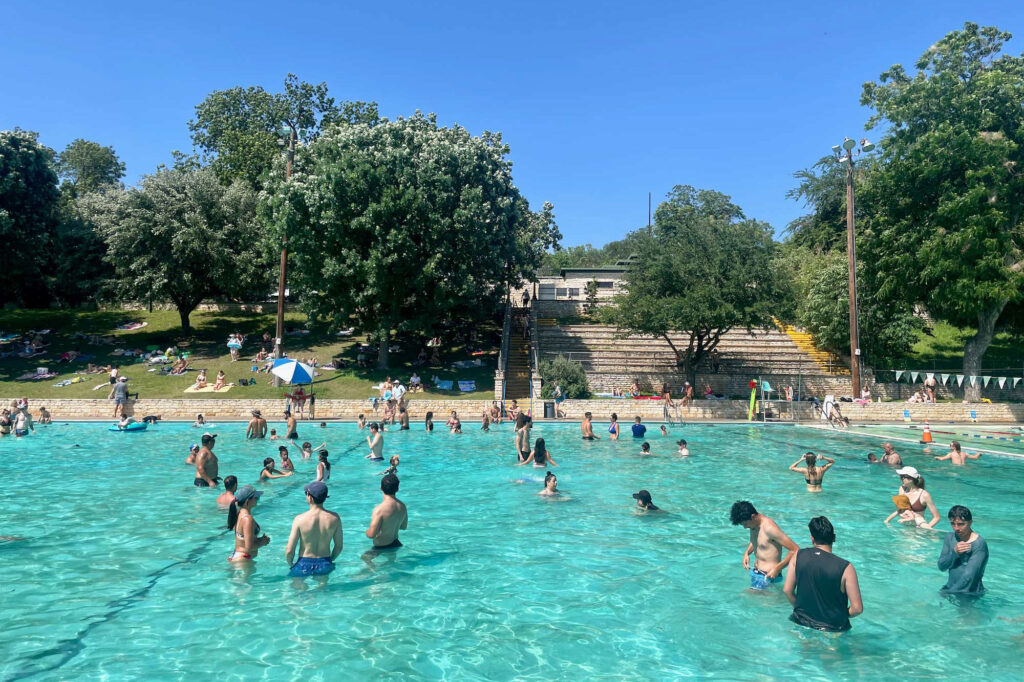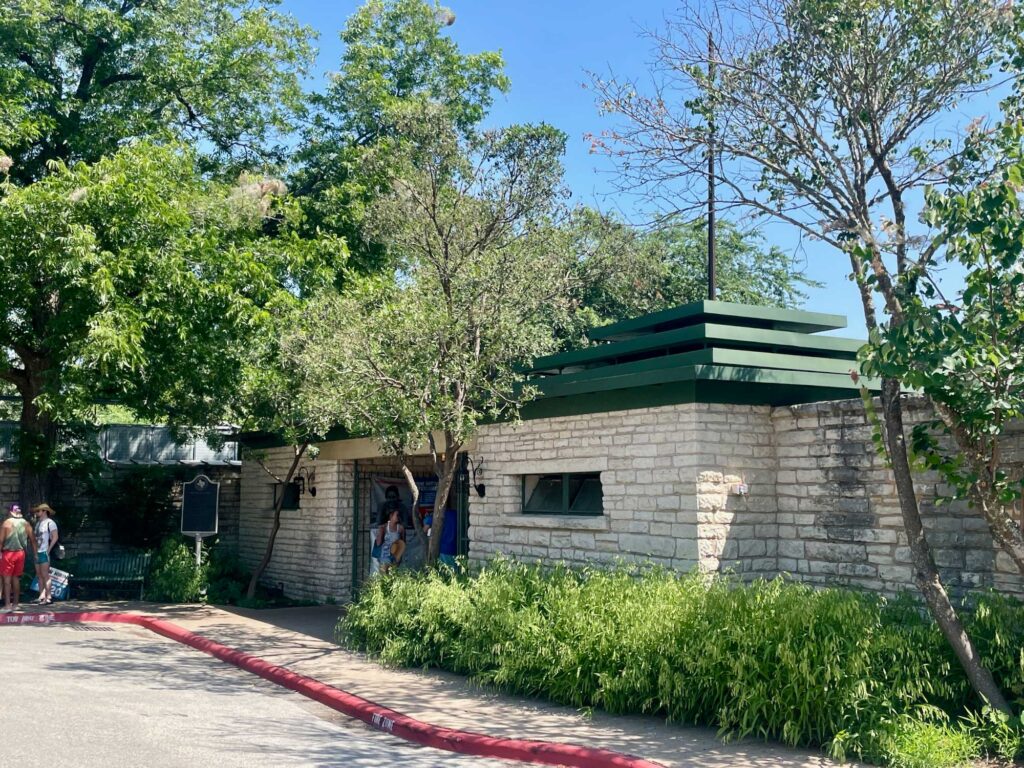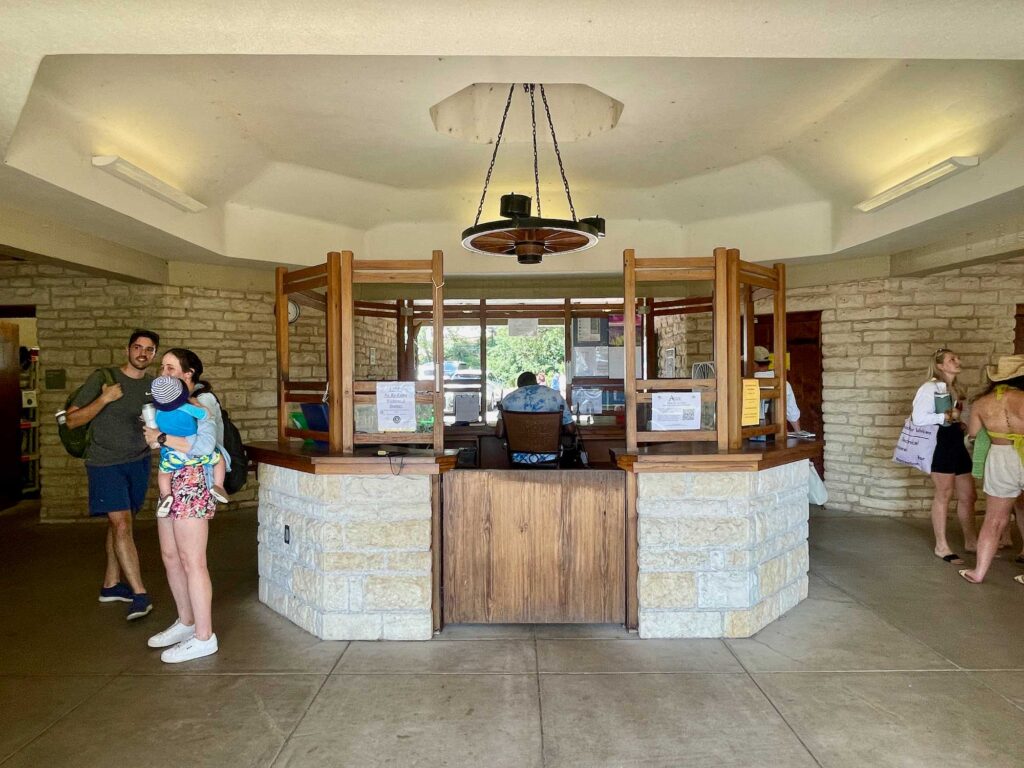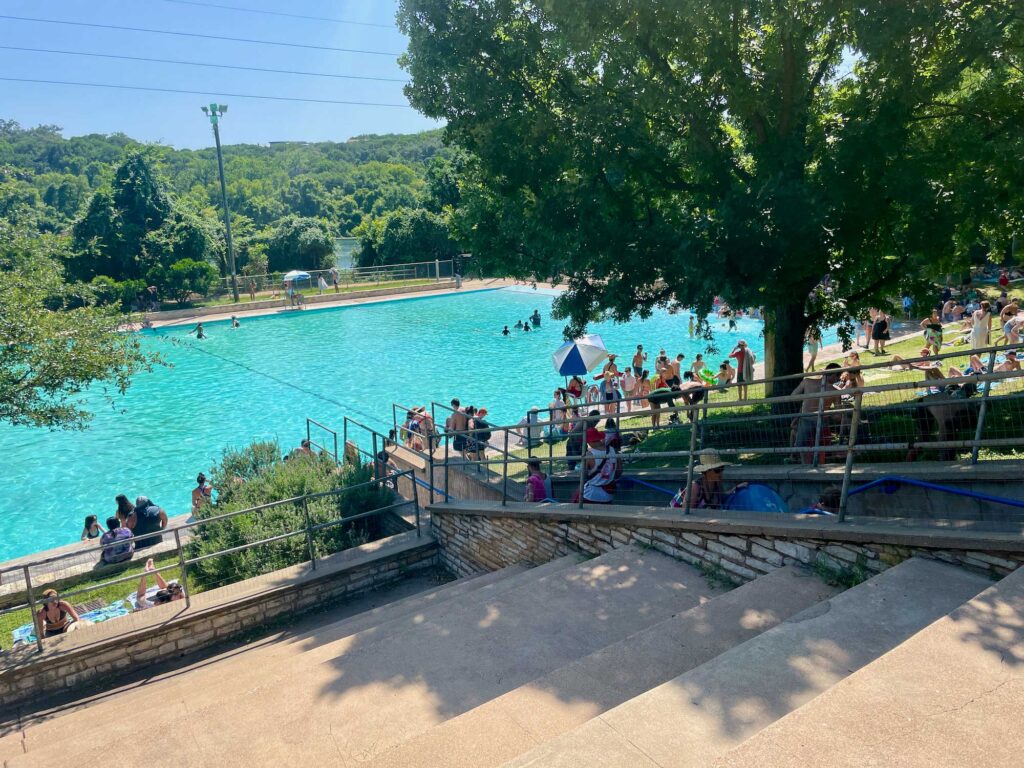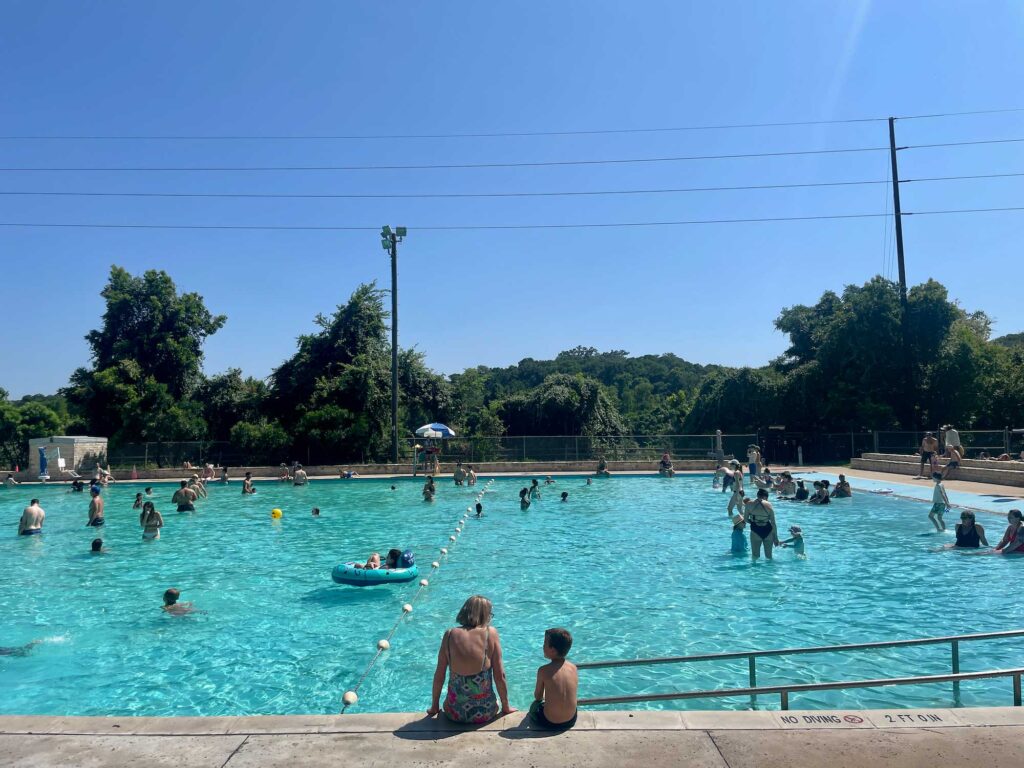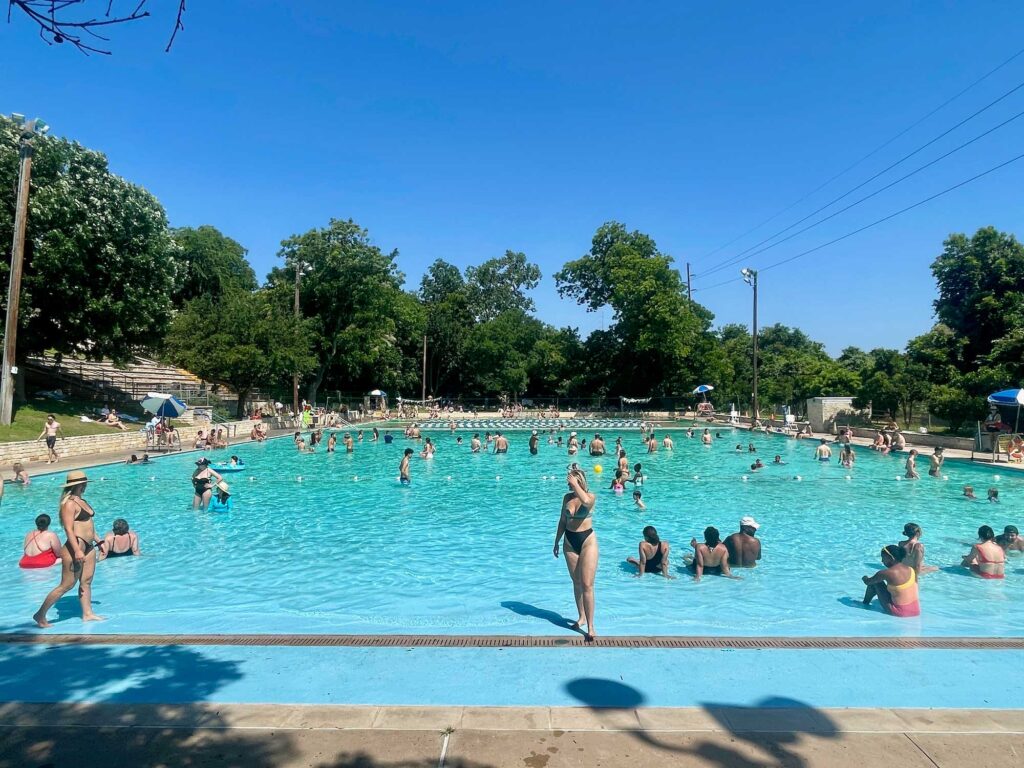Deep Eddy Municipal Pool (or as locals call it, just “Deep Eddy”) is located in Eilers Park and was named after an eddy in the adjacent stretch of the Colorado River that comprises Lady Bird Lake. The eddy no longer exists, but the pool carries on its name.
In 1902, Mary and Henry Johnson—two of thirteen children from a Swedish family who settled the area—decided to open a private bathing beach at the eddy. The enterprise was a success, and in 1915 the siblings sold the beach to A.J. Eilers, who built the pool in the exact location it is in today. Eilers expanded the bathing beach with attractions including a Ferris wheel, movie nights, trapeze artists, and diving horses.
Despite a strong start, decreased attendance during the Great Depression forced Eilers to sell the property to the City of Austin in 1935. Soon after, torrential rains caused a devastating flood in which the Colorado River rose so high that it nearly submerged the Congress Avenue Bridge. When the waters receded, all of the original park structures had been destroyed, and the pool—built on a bed of solid limestone—remained buried under a layer of debris. The City of Austin coordinated with the Works Progress Administration (WPA) to clean up the park and build the bathhouse and hill terraces that remain today.
Located at the pool’s entrance, the bathhouse is of simple design and construction; its materials consist of either limestone (quarried from nearby Zilker Park) or concrete. Upon entry, visitors encounter an octagonal information desk, with a corresponding octagonal ceiling and dome above. To either side are the dressing rooms, which are unroofed and therefore enjoy plentiful natural light and ventilation.
The swimming pool is accessed down a long flight of steps flanked on one side by a sloping lawn, and on the other by terraced risers. At the bottom of the hill, the pool measures 204 feet long and nearly 100 feet wide; it is separated into shallow wading and lap pools. While the pool’s walls are original, its floor has been modified to create the beach-like entry at one end. The people-watching here is hard to beat; pause to take in the scene from a blanket on the grassy slope before diving in. – Patricia Hunt, AIA
